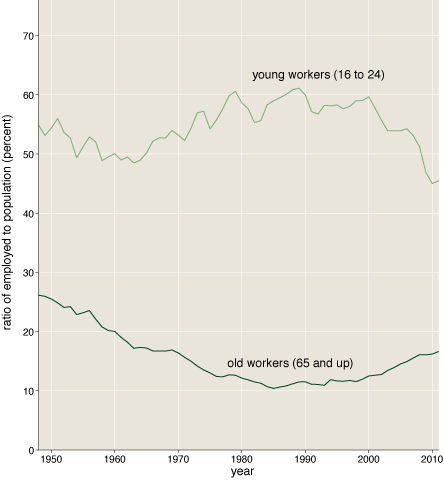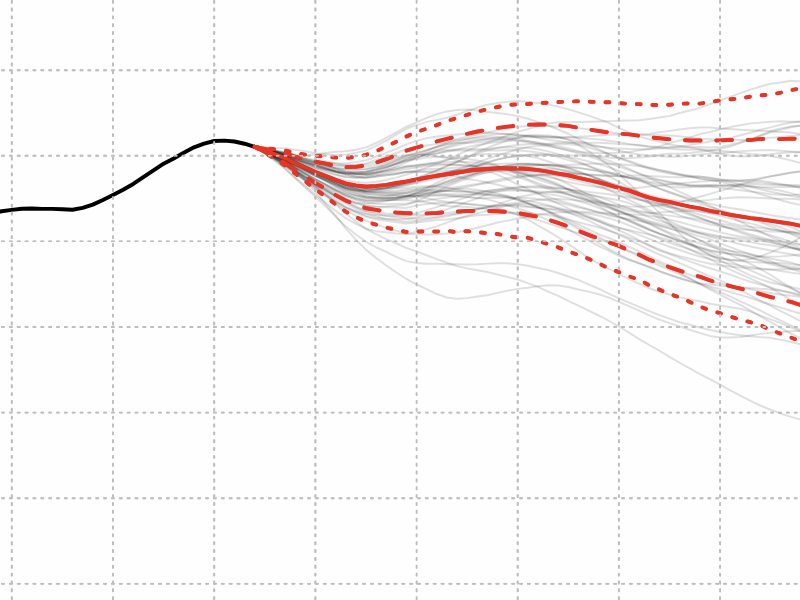Zeroing in on Zeta Zeros
by Brian Hayes
Published 17 February 2006
Casual observers of the mathematical arts might be forgiven for feeling that mathematicians sometimes make rapid progress in the wrong direction.
For example, the concept of a prime number is simple enough to be understood by anyone who knows a little arithmetic. In order to explain the distribution of primes along the number line, however, mathematicians have turned to studying the distribution of the zeros of the Riemann zeta function. And in order to describe the distribution of the zeros of the zeta function, they have been looking into the distribution of eigenvalues of random symmetric matrices. For many of us, converting a problem about prime numbers into a problem about zeta functions and eigenvalues is not progress toward understanding. Nevertheless, if we are to follow the ideas of modern mathematics, that’s where we’ve got to go.
Without actually trying to explain anything about zeta functions or eigenvalues, I can note that the correspondence between those two distributions is looking very good these days. For more than 20 years, Andrew M. Odlyzko (now of the University of Minnesota) has been calculating the positions of hundreds of millions of zeta zeros along a certain line in the complex plane. When the distribution of spacings between those zeros is plotted along with the predictions of random-matrix theory, the match is extremely close—although not quite perfect. The hypothesis is that if we could construct such a plot for all the zeta zeros (there are infinitely many of them) and compare it with the eigenvalues of infinitely large random matrices, the correspondence would be exact. But building such infinite structures is not a practical option.
A group of European mathematicians has now tried another approach. They have analyzed the distortions introduced by looking at only finitely many zeta zeros and by using matrices of finite size, and they have applied corrections to compensate for these finite-size effects. They find that the systematic errors disappear, leaving only what looks to be a structureless and unbiased statistical scatter. Thus the agreement between the zeta zeros and the eigenvalues seems all but perfect. Now if we can only understand what that means.
The new paper is: “On the spacing distribution of the Riemann zeros: corrections to the asymptotic result”, by E. Bogomolny, O. Bohigas and P. Leboeuf, all of the Université de Paris XI, and A. G. Monastra of the Technische Universität Dresden.
For a hand-waving introduction to random-matrix theory I mention my own American Scientist column, “The Spectrum of Riemannium.” And I take this opportunity to correct an unfortunate error in that column: In my acknowledgments I thanked Oriol Bohigas for the phrase that gave me my title, but in fact the phrase was invented jointly by Bohigas and Patricio Leboeuf (both of whom are among the authors of the new paper).
Publication history
First publication: 17 February 2006
Converted to Eleventy framework: 22 April 2025


